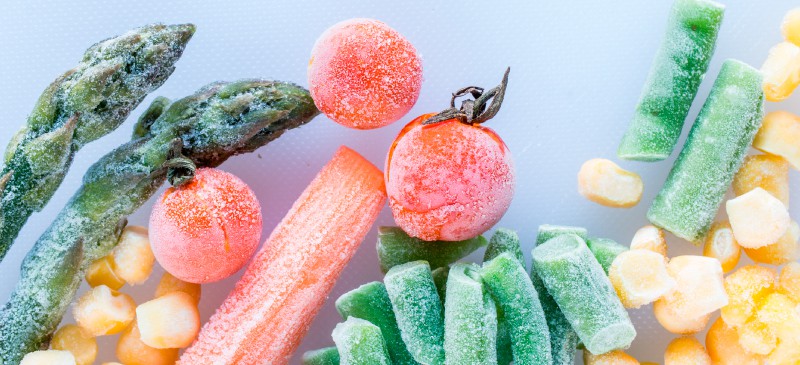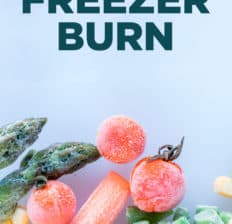This Dr. Axe content is medically reviewed or fact checked to ensure factually accurate information.
With strict editorial sourcing guidelines, we only link to academic research institutions, reputable media sites and, when research is available, medically peer-reviewed studies. Note that the numbers in parentheses (1, 2, etc.) are clickable links to these studies.
The information in our articles is NOT intended to replace a one-on-one relationship with a qualified health care professional and is not intended as medical advice.
This article is based on scientific evidence, written by experts and fact checked by our trained editorial staff. Note that the numbers in parentheses (1, 2, etc.) are clickable links to medically peer-reviewed studies.
Our team includes licensed nutritionists and dietitians, certified health education specialists, as well as certified strength and conditioning specialists, personal trainers and corrective exercise specialists. Our team aims to be not only thorough with its research, but also objective and unbiased.
The information in our articles is NOT intended to replace a one-on-one relationship with a qualified health care professional and is not intended as medical advice.
Is Freezer Burn Bad for You? What You Need to Know & How to Prevent It
June 13, 2021

When it comes to food storage, freezing food — whether leftovers or things you buy in bulk — is one of the most budget-friendly, waste-limiting options there is. However, there’s one problem you may potentially run into: freezer burn, which happens when frozen foods become damaged due to dehydration and oxidation.
Can you eat food with freezer burn, and if you do, can freezer burn make you sick?
Most of the time freezer burn isn’t actually harmful, but it might occur on foods that have reached the point of needing to be thrown out. In this article we’ll look at the potential side effects associated with eating frozen foods that have gone bad, plus discuss how to prevent freezer burn form happening in the first place.
What Is Freezer Burn?
Freezer burn is defined as “light-colored spots developing on frozen foods as a result of surface evaporation and drying when inadequately wrapped or packaged.” It’s also sometimes called ice burn, and it happens mainly because the frozen foods are exposed to air.
When this occurs, it typically changes the color and texture of the food, but it doesn’t necessarily mean the food has spoiled and is unsafe to eat.
Whether or not a frozen food is still OK to eat depends on how long it’s been in the freezer more so than whether its appearance has changed.
Causes
The main cause of freezer burn is freezing food that isn’t wrapped well in airtight packaging. This allows air (oxygen) to reach the food.
Ice within the food then evaporates (moves into the air) and sucks the moisture out of the food, changing its chemical composition. This usually results in the food becoming dry and tougher once it’s reheated. It can also cause water to become deposited as ice on the food’s surface.
Another cause is your freezer having fluctuating temperatures or having too much air coming in and out of the freezer — for example, if you leave your freezer open often. This allows moisture (water vapor) within the foods to keep escaping and then freezing again, changing the texture.
Effects (Is It Safe to Eat?)
Is freezer burn dangerous? Most of the time it’s not a health risk to eat food that has signs of ice burn.
The taste may be different than when the food was fresh, but it likely won’t make you sick unless it’s been in the freezer for a very long time.
How long do different foods safely last in the freezer? Here’s a general guide for how long to keep frozen meals and other ingredients:
- Meat, Poultry, Fish: Three to 12 months in freezer (chopped meat, bacon and sausages don’t last as long as fresh chops or steaks).
- Eggs: Do not freeze unless cooked, such as in quiches that should last one to three months.
- Milk and Dairy Products: Several months in the freezer.
- Fruits: Two to 12 months in freezer depending on the kind (citrus fruits, apples and dried fruits last the longest).
- Frozen Vegetables: Five to 12 months in freezer depending on the kind (potatoes, onions, squash and carrots last the longest).
- Dry Goods (beans, grains, etc.): Up to 12 months in freezer.
- Baked Goods: One to two weeks in refrigerator or three to six months in freezer.
If you do choose to eat frozen food that has experienced some changes in texture, color and taste, one option is to simply cut away the parts that have the most discoloration. You can also scrape off any ice crystals that have formed, which will help once you defrost the food.
Keep in mind that if you’re defrosting meat, eggs or fish, thaw the frozen foods in the refrigerator rather than on your countertop or in your sink, since this limits the chances of bacteria contaminating the food.
Spotting It
What does food look like if it’s experienced ice burn? Here are some common signs of freezer burn:
- Meat that has changed color, such as becoming brown, gray, tan or white in some spots. Changes in color are due to dehydration affecting the meat’s cells.
- Meat that has become tough and dehydrated (dry). Removing the freezer burn spots will improve the flavor and texture once cooked.
- Ice cream, frozen fruit or frozen vegetables that become covered in ice crystals. The crystals might become bigger over time, especially if the temperatures in your freezer keep changing.
Although you can’t see it, food that has become freezer-burned may also lose some of its nutritional value over time. This mostly applies to fruits and vegetables, which contain fragile antioxidants and other nutrients that can be lost when food is no longer fresh, or food that’s overly processed.
How to Prevent It
To freeze-proof your food, be sure to tightly seal packages before putting them in the freezer. Letting the food come to room temperature before freezing is also recommended.
You can try wrapping foods in freezer-proof plastic wrap or in sealed zip-lock bags, placing the food in sealed tupperware or glass containers, or wrapping the food in a tight layer of aluminum foil. As best as you can, get the air out of the containers before freezing the food. This leaves less oxygen circulating around the food, which can cause ice burn.
It’s best not to place meat in its original packaging right into the freezer, since store packaging tends not to be very tightly sealed.
Also write the date on the packages before freezing food, this way you know how long the food will stay good.
Another trick is to keep the freezer from staying open for long periods of time, which allows more air to enter and reach the food. Be sure that your freezer is not constantly changing temperatures because it’s malfunctioning as well. This will cause the moisture level to keep changing with the frozen foods.
Freezers should be kept at 0 degrees F (-18 degrees C) or lower or optimal storage.
Can you reverse freezer burn once it’s occurred? Not exactly — all you can do is defrost and cook the food.
The better option is investing in freezer bags that have a low water vapor transmission rate. Some also choose to purchase a vacuum sealer to pull the air out of the packaging before freezing.
Conclusion
- Freezer burn, also called ice burn, occurs when air and food in your freezer transfer moisture back and forth. The food becomes dehydrated as it loses moisture, changing its color, taste and texture.
- Generally it’s still safe to eat frozen items that have experienced ice burn, assuming they haven’t spoiled because they are simply old and have been frozen for too long.
- Here’s how to prevent freezer burn: Make sure to properly package and seal foods before they go into the freezer; wrap them tightly in air-tight containers, plastic wrap or aluminum foil; and then write the date on the package to keep track of their expiration dates.
- Also minimize temperature fluctuations in your freezer, and make sure not to leave the freezer door open too often.






